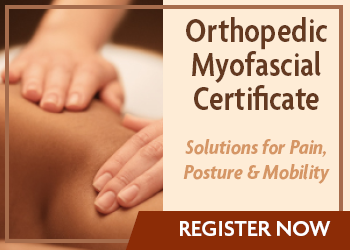With spring in the air, many of us will respond to the extra hours of sunlight and warmer weather by spending more time exercising. While any type of physical activity is beneficial to our health, it’s important for both men and women to know what type of exercise makes our bones stronger and protects against bone disease.
Weight-bearing exercise builds bone.
Our bones are a living, hard tissue composed of a mix of protein and minerals. Not all exercises have the same effect on the density of bone tissue. Only weight-bearing exercises, which stress both your bones and muscles, can stimulate bone formation. While high-intensity strength training with weights is considered the most effective way to strengthen your bones, there are many other weight-bearing exercises that use your own body weight to achieve the same result. These activities include fast walking/jogging/running; hiking hills; yard work, especially mowing the lawn and planting a garden; stair climbing; jumping rope; tennis; and team sports like soccer or basketball. While swimming and cycling are great for cardiovascular health, they are not considered weight-bearing and have little effect on building strong bones.
I work as a rehabilitation medicine specialist at Montefiore Health System in the Bronx, New York. Diana is a 67-year-old woman who came to me after she fractured her wrist when she slipped on ice. She underwent a physical therapy program to support her healing, improve her range of motion and get back strength in her wrist. Before discharging her from physical therapy, I ordered a bone scan that revealed underlying osteopenia (weak bones) throughout her skeleton. I asked about her normal exercise routine and learned that while before her accident she was swimming two to three times a week, she never worked out with weights and walked a minimal amount every day. Thus, Diana was barely engaged in any weight-bearing activities, which likely contributed to her osteopenia. To help prevent future bone breaks, Diana opted for adding light weight-lifting exercises and daily walking to her routine. During the warmer months, she added gardening, progressed her walking to light jogging and also slowly increased her weight-lifting exercises to avoid any potential injury.
Starting weight-bearing exercises at a young age – adolescence or teenage years – helps build strong bones and decrease the chances of osteopenia or osteoporosis later in life. Osteopenia and osteoporosis can be hereditary and more prevalent among women than men. Also, a small body frame and ethnic origins, either Caucasian or Asian, will place you at greater risk.
Bone mass density peaks at around age 30. While starting young will reap benefits later in life, it’s never too late to add weight-bearing exercise to strengthen bones.
Bone tissue is continuously remodeling; new bone tissue is forming, and at the same time, old bone tissue is being removed. Later in life, the process of bone tissue removal is faster than new bone formation. As adults, we lose more bone tissue than we gain, which is why our bones may get weaker and thinner as we age. Exercise is a natural way to slow down the process of weakening of our bones, and there’s no upper age limit to start to exercise to benefit the skeletal system.
Ensure the safety of exercise.
While exercise is great for your health, you should speak with your health care professional to make sure weight-bearing exercise is appropriate for you. And prepare to start at lower intensity and progress slowly to more intense exercises over a few weeks. This will help you avoid sprains and strains.
When exercising indoors, choose free space away from any objects that could potentially present a hazard. For outdoor activity, be mindful that the surfaces are clear of bumps or holes.
Always wear appropriate athletic shoes, or exercise barefoot if the surface allows. Try to avoid slippery surfaces unless you have the proper gear to prevent or protect against falls.
Include physical activity in your daily routine.
Even simple exercises such as walking or stair climbing can help you build strong bones. Try walking instead of driving whenever possible, and choose stairs over elevators.
Invite your family and friends to participate in your new physical activities. Jumping rope, jogging, high-impact aerobic exercises, dancing and gardening with other people is more fun and will motivate you to stay on track.
The next time you choose to take a walk, climb a flight of stairs or challenge a friend to a game of tennis, know that you are also doing your bones a favor – and in turn, your stronger bones are helping you.
from: http://health.usnews.com/health-news/patient-advice/articles/2016-03-22/choosing-the-right-exercise-to-keep-your-bones-healthy-and-strong

